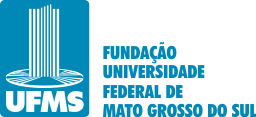Use este identificador para citar ou linkar para este item:
https://repositorio.ufms.br/handle/123456789/3912Registro completo de metadados
| Campo DC | Valor | Idioma |
|---|---|---|
| dc.creator | João Luiz Da Silva | - |
| dc.date.accessioned | 2021-08-18T12:34:41Z | - |
| dc.date.available | 2021-09-30T19:58:05Z | - |
| dc.date.issued | 2021 | pt_BR |
| dc.identifier.uri | https://repositorio.ufms.br/handle/123456789/3912 | - |
| dc.description.abstract | From the 2000s, the municipality of Três Lagoas MS began to experience a rapid growth of its industrial park. This was due to attempts by the Brazilian State to decentralize the industrial complex, originally concentrated mainly in the Southeast, in particular São Paulo. The objective of this dissertation is to try to understand the territorial effects of this capital expansion and the transformation of the urban space in the city of Três Lagoas-MS, with a period between the years 2000 to 2020. The qualitative analysis of the empirical data as much as the bibliographic research sought to identify the factors that contributed to the beginning of this industrialization process, and through the empirical data collected from public agencies and observations made by the author in fieldwork, we identified that the demographic growth caused by the coming of a large number of workers for the city generated a significant increase in real estate speculation, which in turn caused the expansion of the urban fabric of the city of Três Lagoas as well as the emergence of segregated spaces as the main ones. We also noticed that this industrialization process in Três Lagoas was propitiated through the construction, by the State, of an infrastructure geared to meet the needs of expansion of the big capital with the construction of highways connecting the coast to the interior of the country, the creation of a telecommunications network that would allow the management of new branches from the city of São Paulo, technological advances in the areas of commodity agriculture, expanding the agricultural frontier to the Midwest region, and also in the creation of tax incentives for stimulate the movement of industry to more distant regions. This whole set of State actions added to the natural resources available in the Três Lagoas region, such as: lands of pastures already deforested and flat topography that facilitates eucalyptus monoculture, transformed the municipality into an attractive area for the expansion of big capital. Thus, from the year 2000, the city began to experience a great growth in its industrial park. This industrialization process gained momentum with the arrival of two large industrial pulp and paper plants in 2006, International Paper, now Suzano, and Eldorado Brasil Papel e Celulose, considered the largest papermakers in the country. Together with them, other companies have also installed themselves in the place, which have caused a series of social and physical impacts and influenced the transformation of their urban space. Within the objective of this work to study these effects of the capital expansion in Três Lagoas-MS, we are aware of the impossibility of presenting in this text all or even a large number of these effects, so we focus primarily on the agents that most influenced the transformation of the urban space of the city. | - |
| dc.language.iso | pt_BR | pt_BR |
| dc.publisher | Fundação Universidade Federal de Mato Grosso do Sul | pt_BR |
| dc.rights | Acesso Aberto | pt_BR |
| dc.subject | Três Lagoas-MS. Expansão do Capital. Infraestrutura. Urbanização. Cidade. Malha Urbana. | - |
| dc.title | OS EFEITOS TERRITORIAIS DA EXPANSÃO DO CAPITAL E A TRANSFORMAÇÃO DO ESPAÇO URBANO NA CIDADE DE TRÊS LAGOAS-MS ENTRE OS ANOS DE 2000 A 2020 | pt_BR |
| dc.type | Dissertação | pt_BR |
| dc.contributor.advisor1 | Evandro César Clemente | - |
| dc.description.resumo | A partir da década de 1990, o município de Três Lagoas MS passou a experimentar um rápido crescimento de seu parque industrial. Isso ocorreu devido a tentativas do Estado brasileiro de descentralizar o complexo industrial, originalmente concentrado principalmente no Sudeste, em especial São Paulo. O objetivo desta dissertação foi procurar entender os efeitos territoriais dessa expansão do capital e as transformações ocasionadas no espaço urbano na cidade de Três Lagoas-MS, tendo com recorte temporal o período entre os anos de 2000 a 2020. A análise qualitativa dos dados empíricos tanto quanto a pesquisa bibliográfica buscou identificar os fatores que contribuíram para que esse processo de industrialização tivesse início. Por meio dos dados de fontes secundárias levantados junto aos órgãos públicos e observações feitas pelo autor em trabalho de campo identificamos como o principal efeito dessa expansão do capital, o crescimento demográfico provocado pela vinda de um grande número de trabalhadores para a cidade, o que, por sua vez, aliado a outros elementos como a ação de incorporadores urbanos, gerou um aumento significativo na especulação imobiliária. O resultado disso, foi a expansão da malha urbana da cidade de Três Lagoas bem como o surgimento de novos espaços segregados. Percebemos também que esse processo de industrialização de Três Lagoas foi propiciado através da construção, por parte do Estado, de uma infraestrutura voltada para atender às necessidades de expansão do grande capital com a construção de estradas de rodagem ligando o litoral ao interior do país, a criação de uma rede de telecomunicações que permitissem o gerenciamento de novas filiais a partir da cidade de São Paulo, avanços tecnológicos nas áreas da agricultura de commodities, expandindo a fronteira agrícola para a região Centro Oeste e, também, na criação de incentivos fiscais, subsídios e demais medidas para estimular o deslocamento da indústria para regiões mais distantes. Todo esse conjunto de ações do Estado somados aos recursos naturais disponíveis na região de Três Lagoas como: terras de pastagens já desmatadas e topografia plana que facilita o monocultivo de eucalipto, transformaram o município em área atrativa para a expansão do grande capital. Dessa forma, a partir do ano 2000, o município passou a experimentar um grande crescimento de seu parque industrial. Esse processo de industrialização ganhou impulso com chegada de duas grandes plantas industriais de celulose e papel a partir de 2006, a International Paper, hoje Suzano, e da Eldorado Brasil Papel e Celulose, consideradas as maiores papeleiras do país. Juntamente com elas, outras empresas também se instalaram no local, o que tem provocado uma série de impactos sociais e físicos que influenciaram na transformação de seu espaço urbano. | pt_BR |
| dc.publisher.country | Brasil | pt_BR |
| dc.publisher.initials | UFMS | pt_BR |
| Aparece nas coleções: | Programa de Pós-graduação em Geografia (Campus de Três Lagoas) | |
Arquivos associados a este item:
| Arquivo | Descrição | Tamanho | Formato | |
|---|---|---|---|---|
| TEXTO FINAL DISSERTAÇÃO 1.pdf | 5,63 MB | Adobe PDF |  Visualizar/Abrir |
Os itens no repositório estão protegidos por copyright, com todos os direitos reservados, salvo quando é indicado o contrário.

